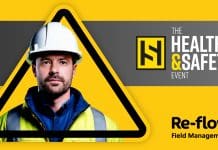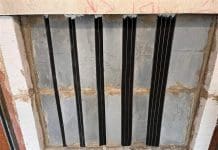With fire safety under the spotlight, Assessed Risk examines the key steps in carrying out a fire risk assessment that goes beyond box-ticking to ensure all bases are covered if the worst happens
While it’s tempting to think of fire risk assessments of any kind as a box-ticking exercise, ensuring that your business is well prepared in the event of disaster could be one of the single most important investments that you make.
As an employer, you are legally required to have a written record of your fire risk assessments if you have more than five employees; even if you don’t, showing that you’ve considered what you’d do in the event of a fire will almost certainly mean that any insurance claim is dealt with more efficiently.
Subsequently, you’ll be far less likely to suffer a heavy impact on your business. With that in mind, what do you need to do to make sure that you are compliant? The keywords here are Identify, Evaluate, Record and Review.
Identify
The first step in any fire risk assessment is to identify the hazards – and while some hazards are easy to spot, others might not be quite so obvious. Physical hazards, such as poorly maintained electrical equipment or flammable chemicals, usually stand out but you also need to consider less tangible aspects of fire safety; for example, egress routes might be second nature to your regular and able-bodied staff but would you be certain that someone sight impaired or a guest to your premises could evacuate safely?
Evaluate
Once you’re comfortable that you have identified all the potential hazards in your premises, your next step is to evaluate them. How can you reduce or remove potential risks? There are a variety of ways of doing this, some of which will also ensure that you are compliant with other legislation (for example ‘PAT’ testing of equipment). The action you take might be as simple as keeping your stock levels of flammable chemicals to an absolute minimum, or as complex as investing in a sprinkler system.
Record
Now that you have identified potential hazards and found ways to reduce or eliminate them, it’s vital that you record all the steps that you have taken in doing so. While your fire risk assessment documentation doesn’t have to be massively technical, it is important that you’re confident that you have recorded everything – if you feel that any area of your business is high risk, it’s usually worth seeking help from a qualified consultant or company.
Review
Having done all of this hard work, the last step is to make sure that you review your fire risk assessments regularly, and how frequently you do this will depend on a variety of factors. Best practice suggests that you should be doing a full review annually – however, you will also need to consider the impact of any changes to your premises or personnel as and when they happen. If any of these changes are significant (such as changes to the layout of your building), you will probably have to complete a new assessment.
In conclusion, although there are only a few steps to ensuring that you are compliant, it’s critical that you make sure that you are paying significant attention to fire safety in your premises. Far from being a one-off investment of time, risk assessments are a continuing process that needs to grow and evolve with your business. Nobody wants to believe that the worst could happen, but if it does you need to be absolutely certain that you have covered all of your bases for the sake of your business, your employees and your clients.
Assessed Risk
Tel: +44 (0)800 634 9868
Twitter: @AssessedRiskUk
Facebook: Assessed Risk UK





![[Video] Fireco: 80 new fire doors required for residential flats in London](https://www.pbctoday.co.uk/news/wp-content/uploads/2025/04/2024-06-01-Lords-view-one_1200x750_004-218x150.webp)

![[VIDEO] Making DorTrak reports easy to read with Fireco Inspecting fire doors at Fireco, firedoor technology, 2023](https://www.pbctoday.co.uk/news/wp-content/uploads/2024/04/JPZ_2364-web-218x150.jpg)





